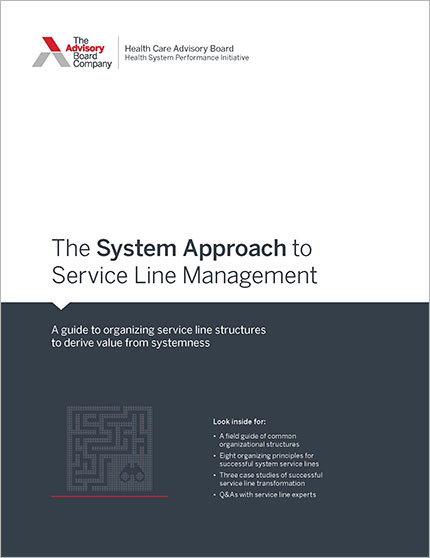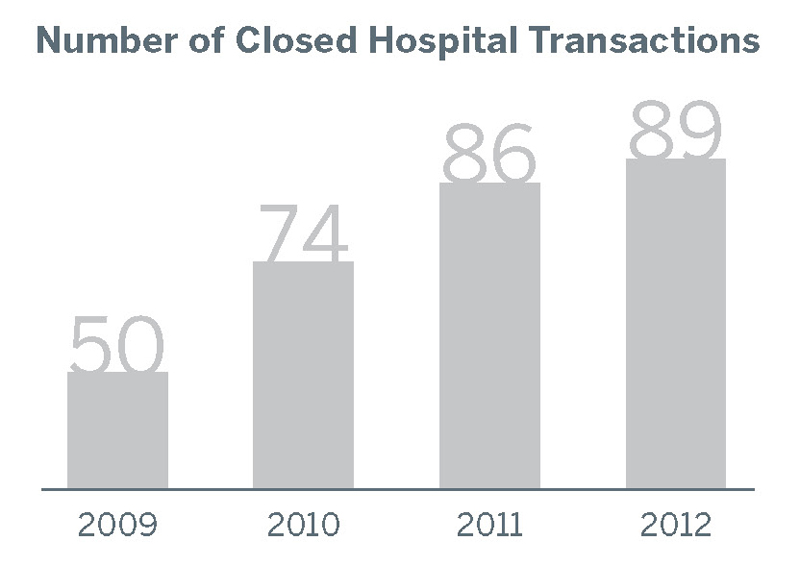Auto logout in seconds.
Continue Logout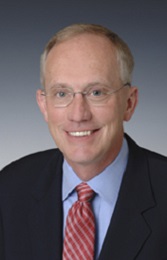
This interview with David Blom, CEO of OhioHealth, was conducted by Eric Larsen, managing partner, and condensed by Amanda Wolfe, senior director.
Question: You're a born and bred Ohioan. This is your state. You've been with OhioHealth for 33 years, 14 of those as CEO. What propelled you down this path?
David Blom: When I was a junior at Ohio State, I had two jobs: one in the morning at a furniture store, and one in the evening as a switchboard operator at OSU Medical Center. I worked at the psychiatric hospital, and Connie Mansfield ran the division. I hadn't decided what I was going to do with my life, and she suggested a meeting with her husband, Ed Mansfield, who was CEO of Riverside Hospital.
This table here in my office was his desk! I sat on that side, and he sat on this side. Ed told me, 'What I like about this business is I'm definitely a businessman, but I get to impact people's lives directly every single day.' That's what appealed to me.
I wrote him a letter once every quarter when I was in graduate school for hospital administration. Sometimes it was a paragraph, sometimes a page. But the point was that it kept us in touch. I tell that to young people: Stay in touch with your mentors.
I was working in Massachusetts after graduate school, and one day I got a call from Ed. He wanted me to come back to Columbus to work for him, and so I did.
When I drive up to Riverside, I still think how remarkable it is that I sat down with Ed at that hospital in 1978, and today it has grown into a health care system that cares for patients in nearly half of the state. I’m very grateful to be part of it all.
Q: I've heard that you are 'maniacal' about your four-part balanced scorecard. This goes to every single one of your 22,000 associates, from the frontline staff to the janitorial staff. And you’ve received some nice accolades over the past few years, which I’m sure is related. Two in particular stand out. One is the Truven award, which you received five years in a row for being a top system nationally in the largest system category. And you've also received Fortune's award for Best Places to Work for 10 years in a row. How essential has the balanced scorecard been for OhioHealth?
Blom: The balanced scorecard gives us a framework for what's important, and everything we do maps back to it. It's evolved over time, meaning that the metrics change each year, but the rigor and the discipline stays the same. Every associate in the organization has some part of their compensation leveraged on it.
When we really focus on part of the balanced scorecard, such as quality, we end up with recognition from Truven or Leapfrog. If we're really focused on capital efficiency, margin, and managing our finances, we get an AA+ credit rating.
Just 35% of managers are engaged at work, Gallup finds
In 2002, we changed our vision statement to be 'the place where people want to work, where physicians want to practice, and where patients want to get health care services.'
At the root of it all is our people. We measure associate and physician opinion as part of the scorecard, and we come up with a work plan to fix any cost center with opinion below a certain threshold.
Q: If you could teleport back in time and counsel yourself, what lessons from now would you impart?
Blom: If there's one thing I wish I had learned earlier in my career, its leadership. I never had a leadership course in high school, college, or even in graduate school. Had I understood leadership more clearly earlier in my career, I could have avoided a lot of mistakes.
Winning hands, heads, and hearts
Q: Speaking of leadership, you talk about focusing on “hands, heads, and hearts." Can you explain that philosophy?
Blom: First I consider, do I have the hands to do the job? You've got to recruit the right people, those who have the values, competence, and character you want. As far as heads, we do a lot of work to explain what we're doing and why. There are no strategic secrets in the organization. Then you also need to light people up, and you do that with their hearts.
If you get all three of those things, it's something really special.
Q: OhioHealth has received some great recognition for your team’s community involvement—something like 4,000 of your employees have signed up for volunteer activities. Can you articulate how you think about your impact on the community, particularly through the lenses of leadership and motivation? How do you get your staff on board with a community-focused vision?
Blom: We live or die as an organization based on how well we serve our community. That's our mission. We don't have an educational mission. We don't have shareholders. We try to find a way for everyone in the organization to really connect with that.
One way is that we have an office to coordinate board memberships and community engagement. If an OhioHealth associate is on a board, we give them a certain number of dollars to spend, so they can buy a table for an event, or do a walk, or contribute to a project.
And when we do capital allocation, we don't just go to the wealthy suburbs. Here's an example. A number of years ago, we wanted to build a new hospital in Dublin, which is a wealthy suburb. We also had some capital needs at Grant Medical Center, which is our downtown hospital. I viewed the $80 million project at Grant and the $120 million project at Dublin as really the same project.
We also allocate dollars every year for projects like Wellness on Wheels, which we've been doing for 20 years. We started by providing care to pregnant teenagers, and now we go to a homeless shelter, too.
Q: Speaking of impact on the community, your hospice Kobacker House seems like it's a really special place. You've said in the past, 'Our baby wing is shiny and new. Why shouldn't the hospice be similarly attended to?' I don't want to be insensitive, but I understand that your father passed away at Kobacker.
Blom: End-of-life care is just so hard to talk about. As I think about societal health care costs, so much is spent at the end of life. But I don't believe we're going to solve the end-of-life issue just by focusing on costs. You don't get to people's hearts that way. You get their hearts in it by developing something that's better than what they have today.
Your primer on hospice services
When my dad was dying, a pulmonologist, cardiologist, and nephrologist sat with him and my mom for almost an hour, leading him through a conversation about his options and their effects. But they didn't make the decision for him. He made that decision. You have to have physicians and staff who are skilled in having that kind of conversation. A lot of physicians don't know how to do that.
The volunteers and staff made those 21 days that my dad was at Kobacker pretty special. It was hard, but it really was a celebration of his life. My thought was: We bring people into the world in a setting where families can gather and celebrate. Why can't we do the same thing at the end?
Systemness
Q: A big issue for system CEOs is the concept of 'systemness.' What's your system optimization strategy? I'd especially like to hear your thoughts on what the 'next level' of systemness looks like for OhioHealth.
Blom: We had multiple boards of directors prior to 2002. We spent a lot of time going to board meetings, and I would sometimes forget what we had talked about.
After one week of multiple meetings, a couple board of members said to me, 'Everyone's talking about how to make their individual hospital better. That's not our job. We should figure out how to serve the community collectively more effectively with all of our assets.'
That was a seminal moment.
All of a sudden, it wasn't just about maximizing cardiology at Riverside or Grant, but rather figuring out how can we take these assets and organize them in a collective way to serve the community better. We ended up consolidating to just one board.
Now, when we have a problem, we approach it as a system. Operating efficiency, economic efficiency, clinical efficiency, our ability to interact with consumers, our brand—these are all things that will require us to be even more systemic than we are now.
Q: I think the next big challenge is taking that lens and rigor around systemness and applying it to clinical standardization and eliminating unjustified clinical care variation. A lot of your peers are looking to you with curiosity about what it means to evolve as a system.
Blom: Clinical standardization is another evolution that's in progress. We've taken a page out of the book of Intermountain, so I'm not going to claim credit for it. We've had them here, and we've gone there several times.
Our chief medical officer and his team have set up clinical guidance councils, which are physicians from the same specialty across the whole system. Clinical standardization has to be physician-led, and the councils are providing the forum and the leadership for that to happen.
The system blueprint for clinical standardization
We included a standard order set when we implemented our electronic health records system last year. Is it as detailed, granular, and prescriptive as I'd like it to be? No. But it was a good step. We're doing a pretty good job of helping our medical staff understand the importance of reducing unnecessary variation. It takes time, but we're getting there.
Collaborating in a competitive market
Q: OhioHealth is one of the strongest-performing health systems in the country. Because of your financial strength and reputation, you undoubtedly get approached about acquisitions and partnerships a lot. How are you thinking about expansion?
Blom: Our board has defined a geography where it is natural for us to continue to grow: the areas of the state that are oriented toward Columbus for shopping, arts, and health care. It's been a useful exercise because when someone from outside of that geography says, 'Are you interested?' we can say 'no' because it doesn't make sense. Over the last few years, we've said 'no' more than we've said 'yes.'
We'll only go into a community if we can help them grow and reduce expenses, and keep care local.
Q: There's increasingly less and less distance between OhioHealth and some of the other big players around the state. On one hand, that could invite more competition, but on the other hand, it could inspire collaboration. In that vein, your work with Aultman Hospital, Cleveland Clinic, Premier Health, ProMedica, and TriHealth as part of the Midwest Health Collaborative comes to mind. What's the aspiration for the collaborative?
Blom: We're all leaders in our markets, and I really respect all of them. We've talked about doing a variety of things. We all understand that we'll be managing populations in the future, not just managing the sick and injured. That's a complicated game. We didn't think it made sense to individually build our own infrastructure to do that, and so we're working on a collective effort.
To the extent that there are statewide employers that would like to have one network, then we'll do that, too. But we have to do the former before we go to the latter.
Taking on risk
Q: You've just described a pretty aspirational population health vision. How are you guiding OhioHealth toward true population health proficiency or true delegated risk?
Blom: We're starting with our own associate base, and we have a simulated cap rate for them. Next year, our goal is to lower the per-member, per-month cost.
I want a year or two of experience with our associates before I go to an employer and say, 'Join us.'
Q: To my knowledge, OhioHealth is not participating in any ACOs, nor the Medicare Shared Savings Program at the moment. Am I correct?
Blom: You're correct.
Q: I'm curious as to the thinking behind that. Is it a timing issue? Is it dissatisfaction with the methodologies used, especially for MSSP? Will you be participating at some point?
Blom: We just haven't found a need to participate yet, but I think we eventually will. We may end up working directly with an employer, or with a payer or two.
Q: The majority of system CEOs I talk with tell me that they are, at a minimum, thinking very seriously about launching a provider-sponsored health plan. By my calculation, about 15 percent have actually gone forward with it. Can you comment on this phenomenon of provider-sponsored health plans? Have you made a decision there?
Blom: We have. We believe the capability we need to build is to be able to manage clinical risk. And if we do that well, that insurance infrastructure will be available for us. You can rent, buy, or partner on the underlying insurance infrastructure.
What providers really think of health plans
Looking toward the future
Q: What's the press release say for OhioHealth, on Feb. 10, 2018?
Blom: I'm going to turn your question around. In 2018, I would hope that OhioHealth has created a network that employers and employees find helpful in managing their health, not just managing their illnesses, and they choose it for attributes of access, quality, and clinical efficiency. I'd hope they'll feel better—they'll never feel good—about how they spend their money with us because we're more clinically efficient. And I hope that we'll have connected with them as consumers rather than just as patients. That's not a press release, but that's what I think about.
Get more lessons from the C-suite
See the Daily Briefing's archive of must-read interviews with other top hospital and health system leaders, including:
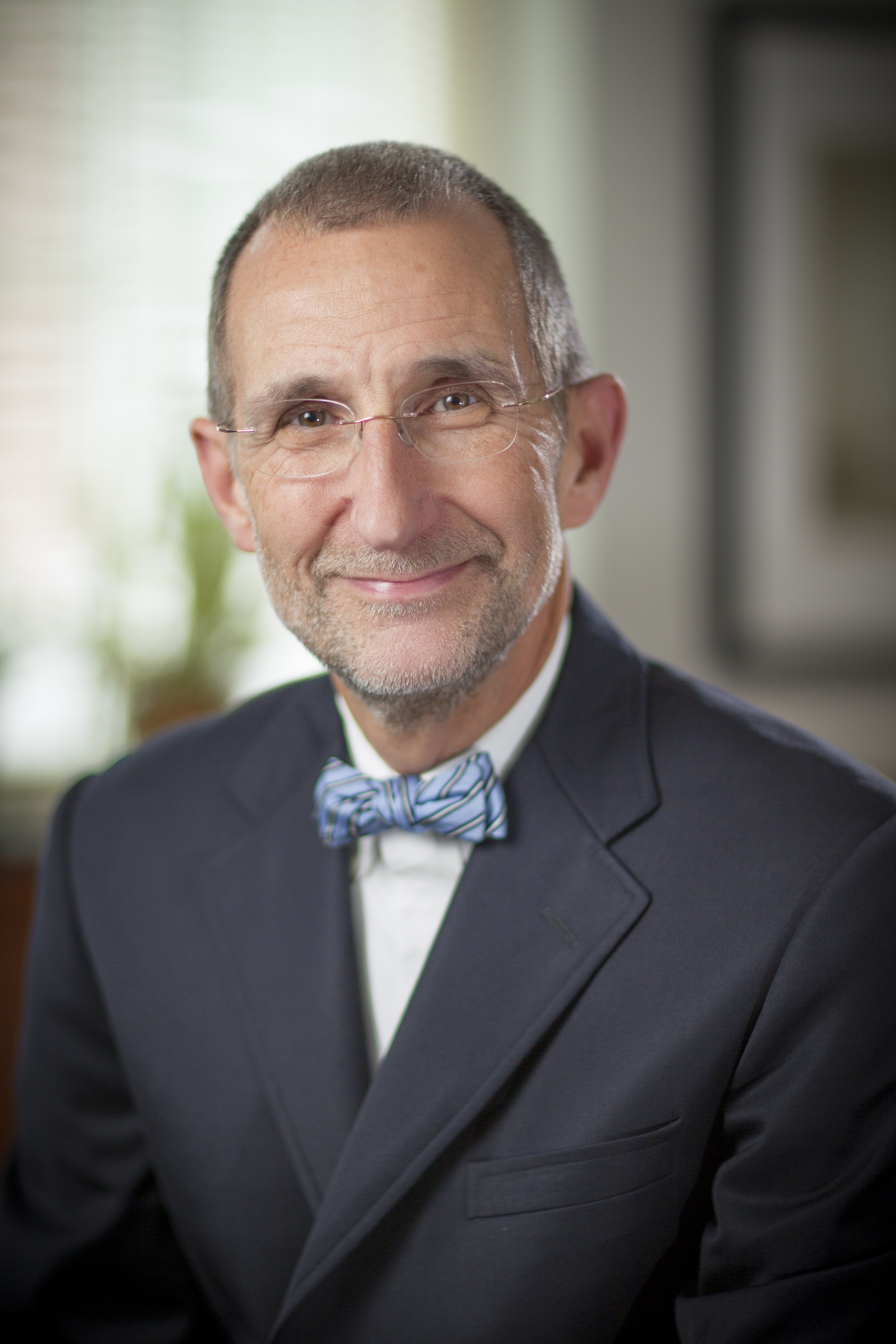 Some CEOs talk about 'my team.' Here's why UNC Health Care's CEO won't
Some CEOs talk about 'my team.' Here's why UNC Health Care's CEO won't
William Roper, CEO of UNC Health Care, talks about the state of academic medical centers, assuming more downside risk, and his favorite quote from President Ronald Reagan. Read our interview with William.
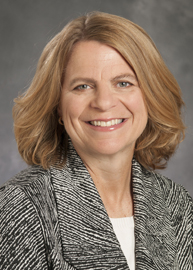 They told her she was 'too empathetic' of a leader. Now Penny Wheeler runs a 13-hospital, $3.5 billion system.
They told her she was 'too empathetic' of a leader. Now Penny Wheeler runs a 13-hospital, $3.5 billion system.
Allina Health's president and CEO talks about her system's plan to "disrupt the market," why she wishes Allina still had its health plan, and more. Read our interview with Penny.
What Johns Hopkins' CEO thinks about hospital rankings
Johns Hopkins Medicine CEO Paul Rothman discusses how his health system's mission brought it to Saudi Arabia—and how the system addresses health disparities close to home, too. Read our interview with Paul.
Don't miss out on the latest Advisory Board insights
Create your free account to access 1 resource, including the latest research and webinars.
Want access without creating an account?
You have 1 free members-only resource remaining this month.
1 free members-only resources remaining
1 free members-only resources remaining
You've reached your limit of free insights
Become a member to access all of Advisory Board's resources, events, and experts
Never miss out on the latest innovative health care content tailored to you.
Benefits include:
You've reached your limit of free insights
Become a member to access all of Advisory Board's resources, events, and experts
Never miss out on the latest innovative health care content tailored to you.
Benefits include:
This content is available through your Curated Research partnership with Advisory Board. Click on ‘view this resource’ to read the full piece
Email ask@advisory.com to learn more
Click on ‘Become a Member’ to learn about the benefits of a Full-Access partnership with Advisory Board
Never miss out on the latest innovative health care content tailored to you.
Benefits Include:
This is for members only. Learn more.
Click on ‘Become a Member’ to learn about the benefits of a Full-Access partnership with Advisory Board
Never miss out on the latest innovative health care content tailored to you.

